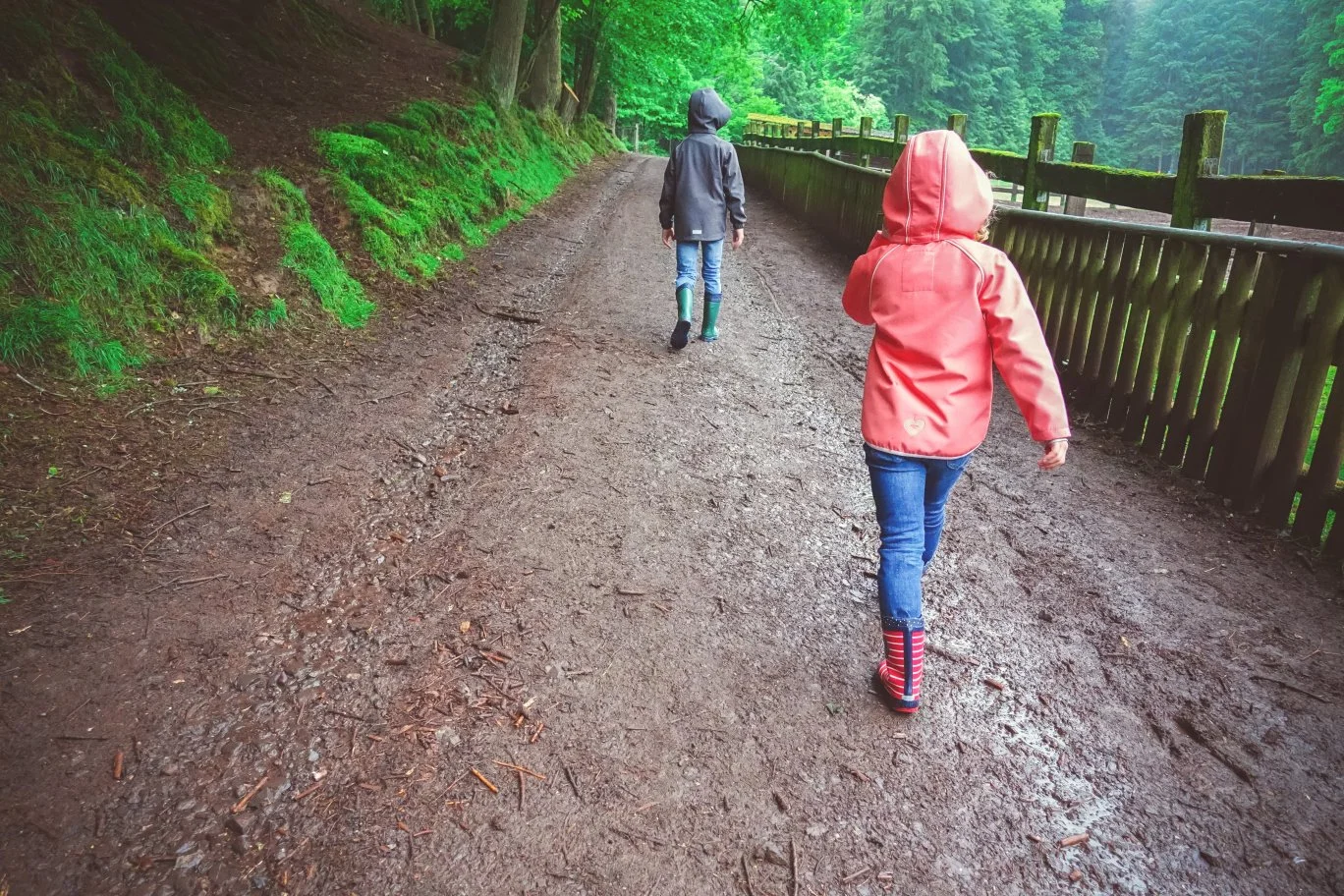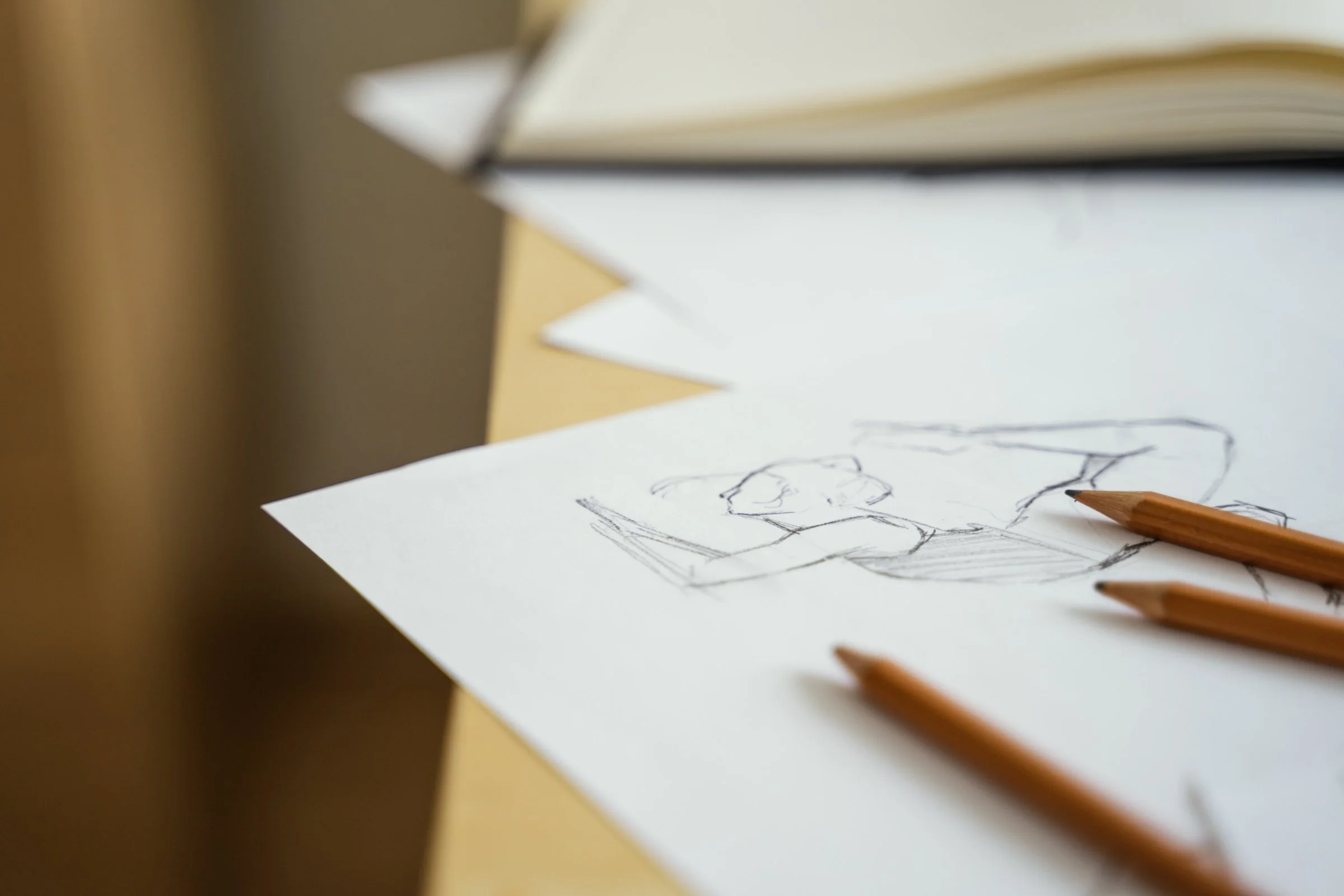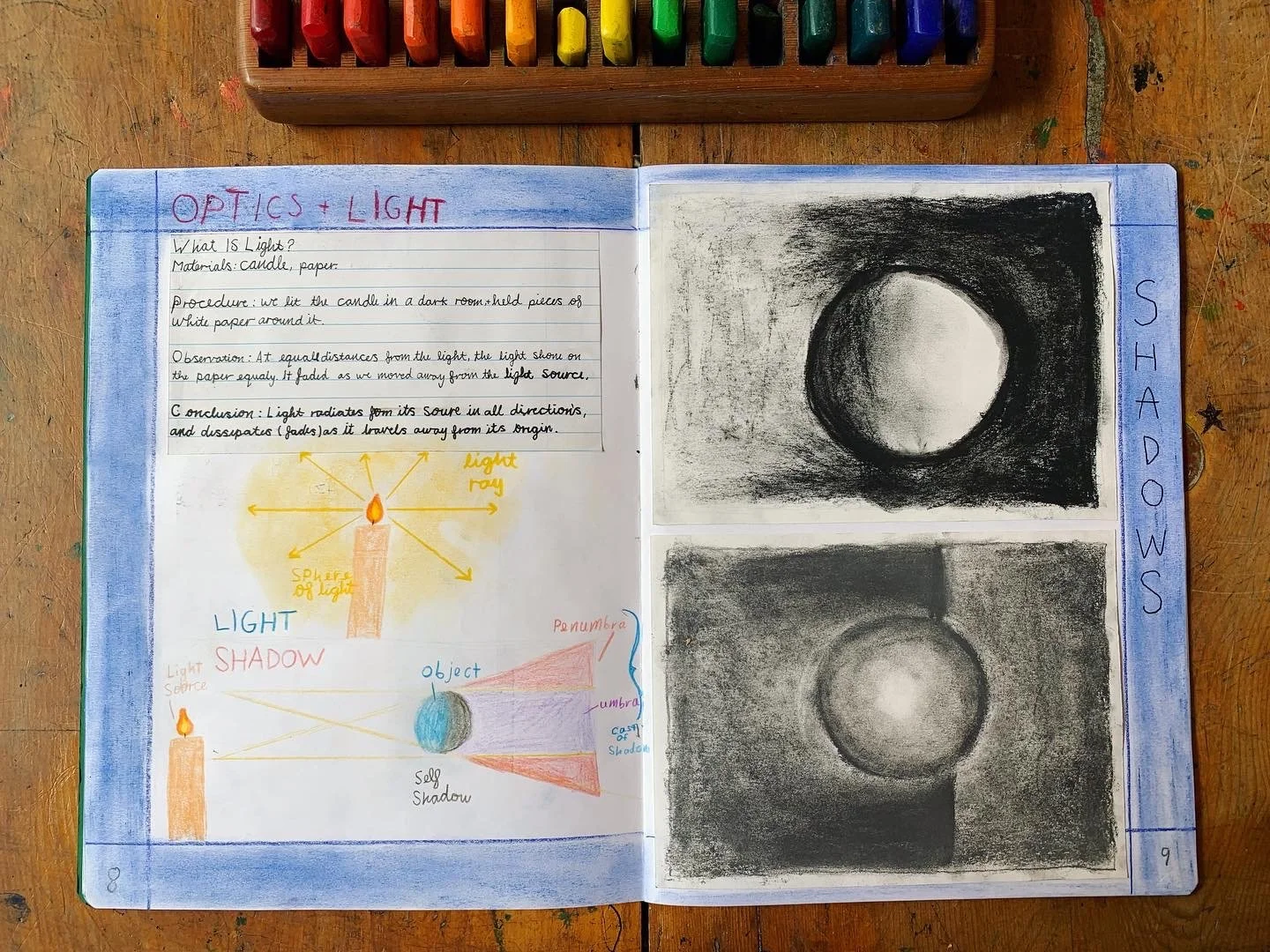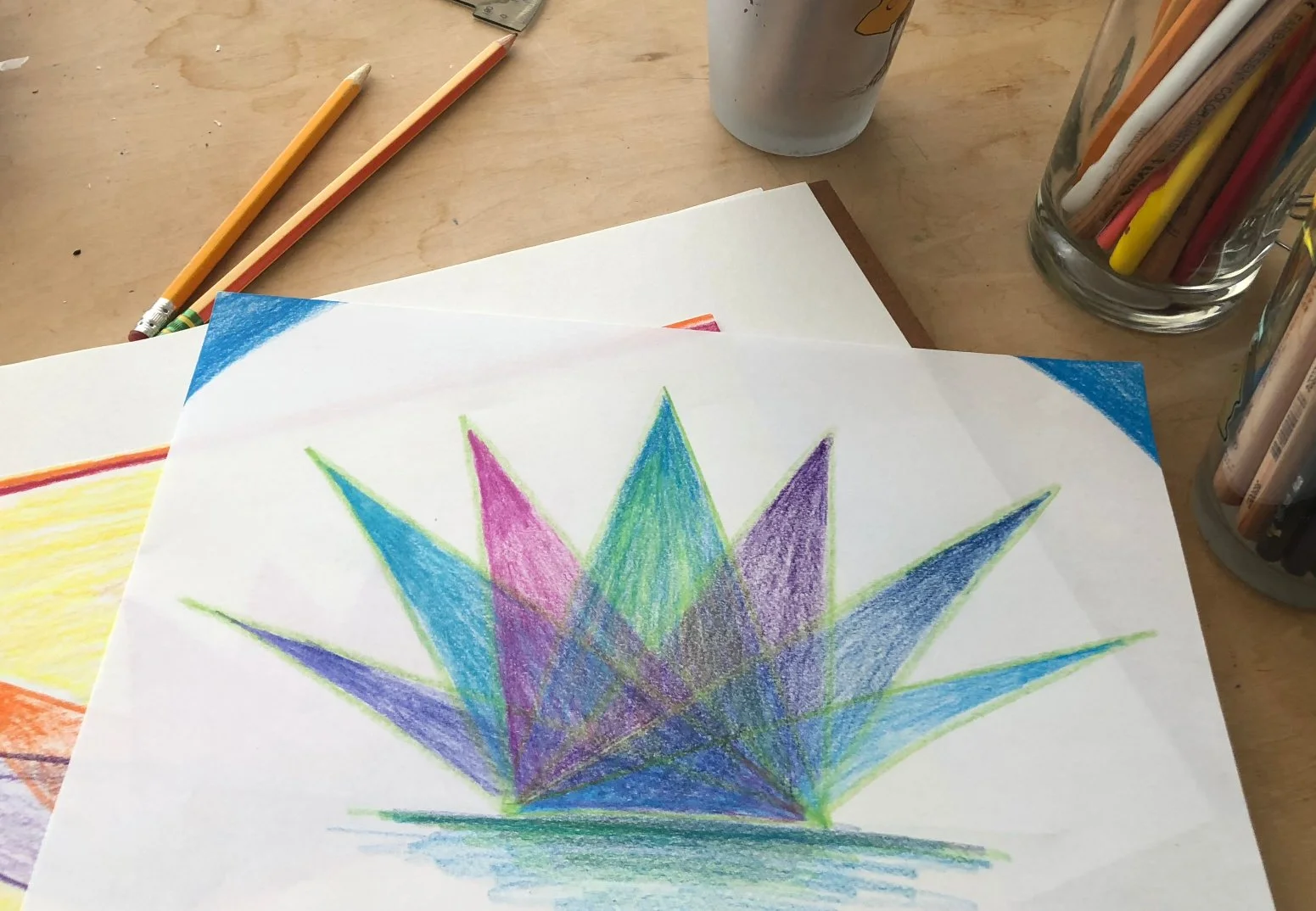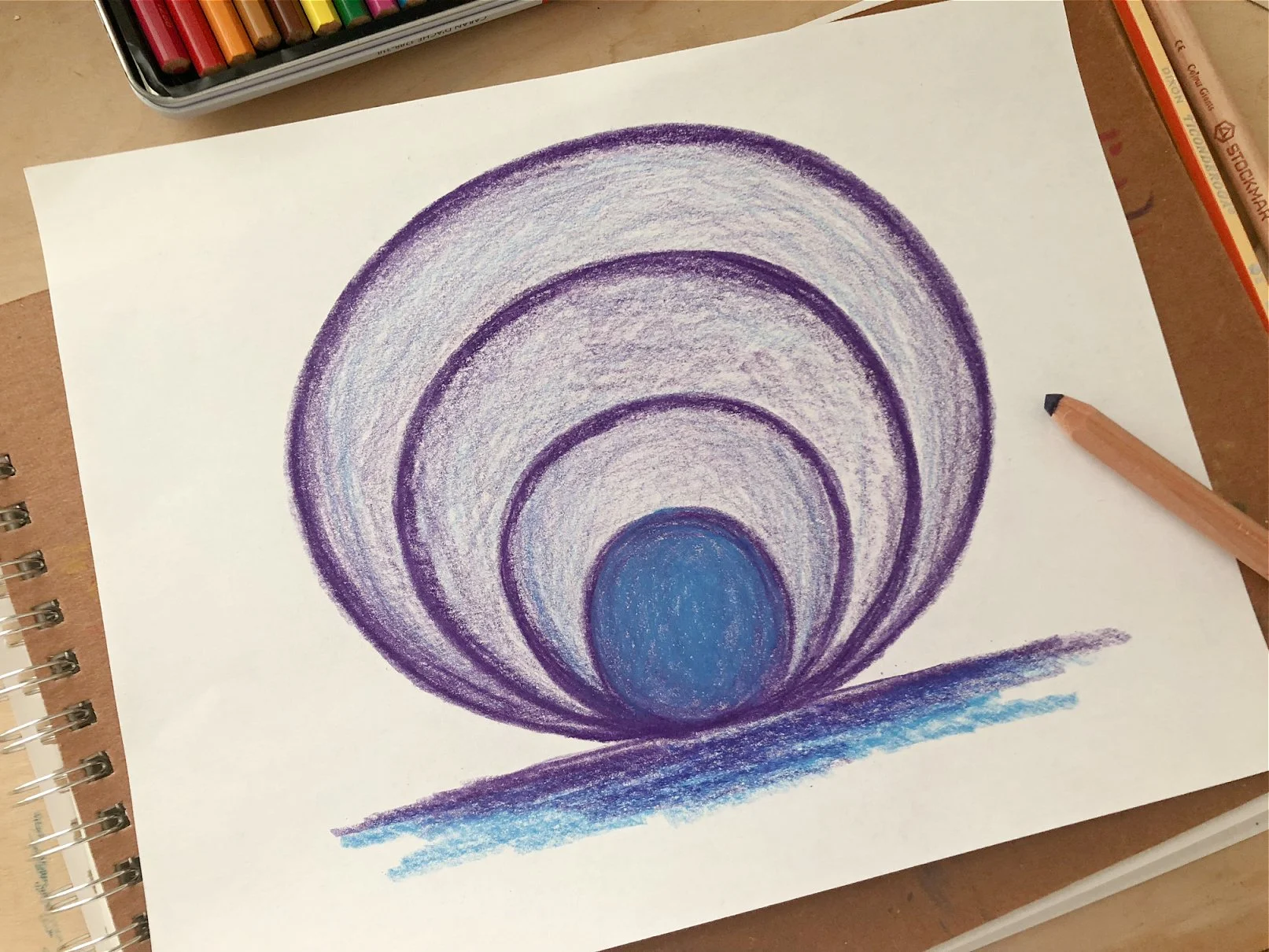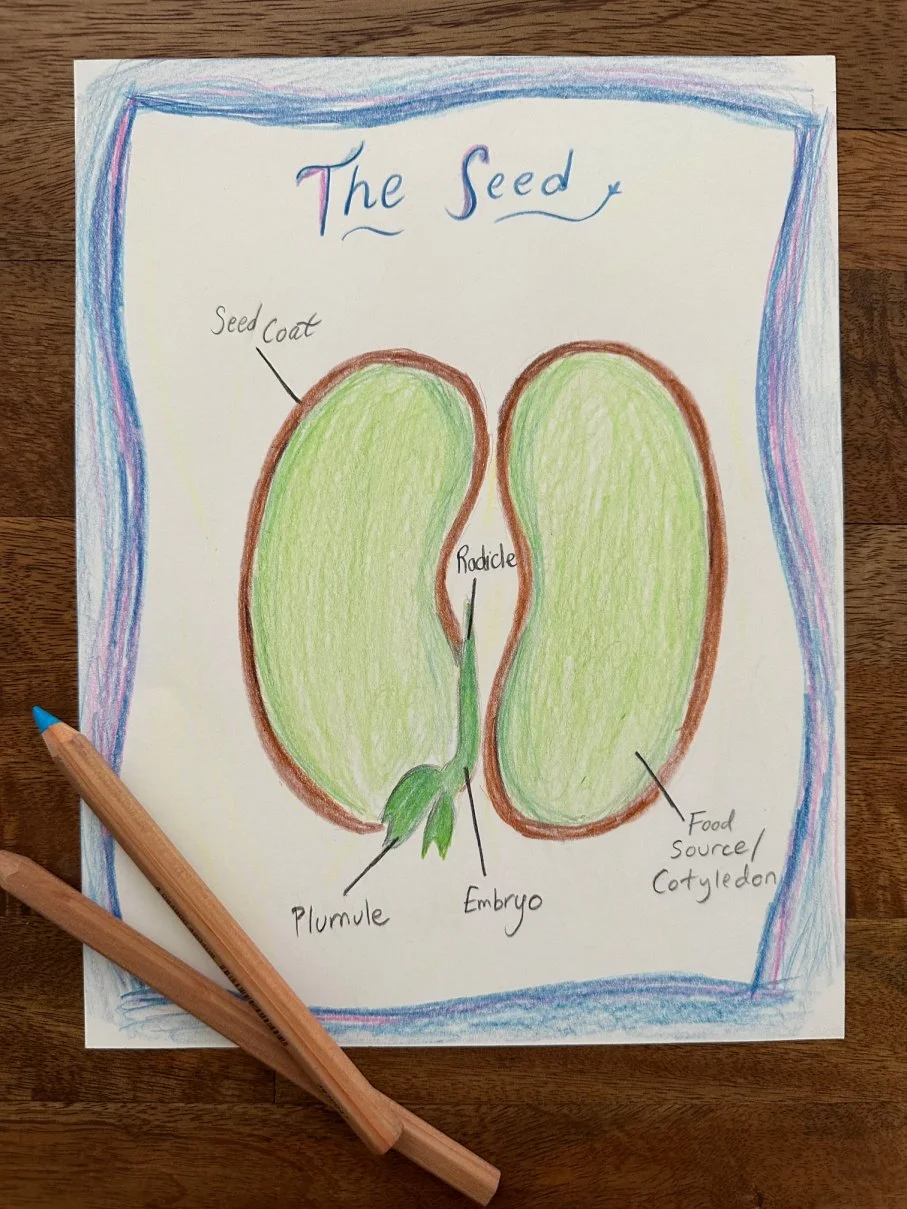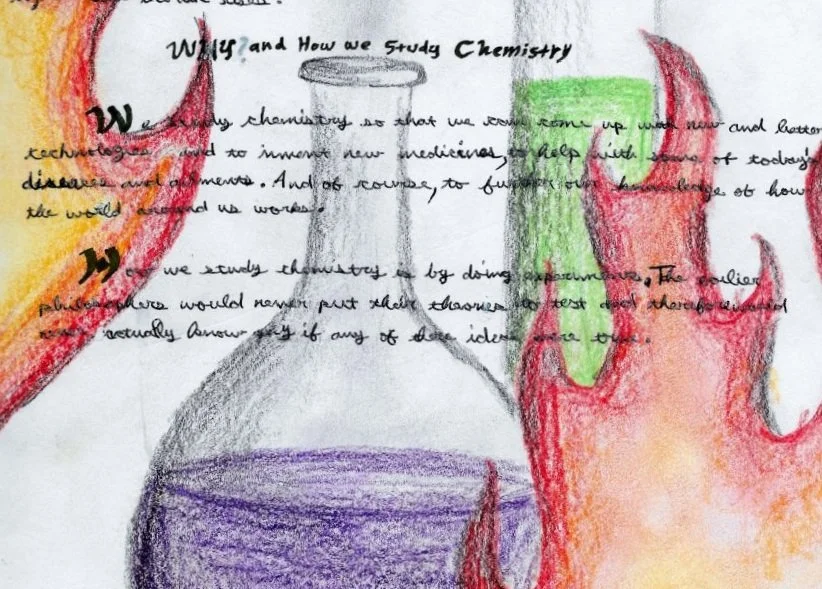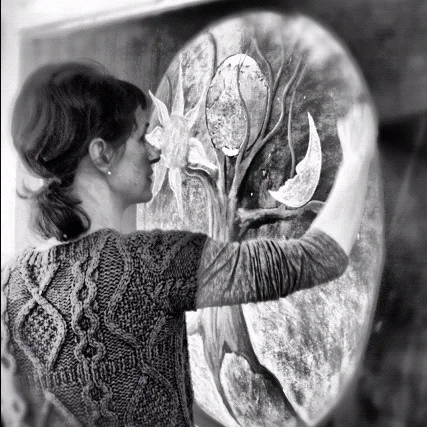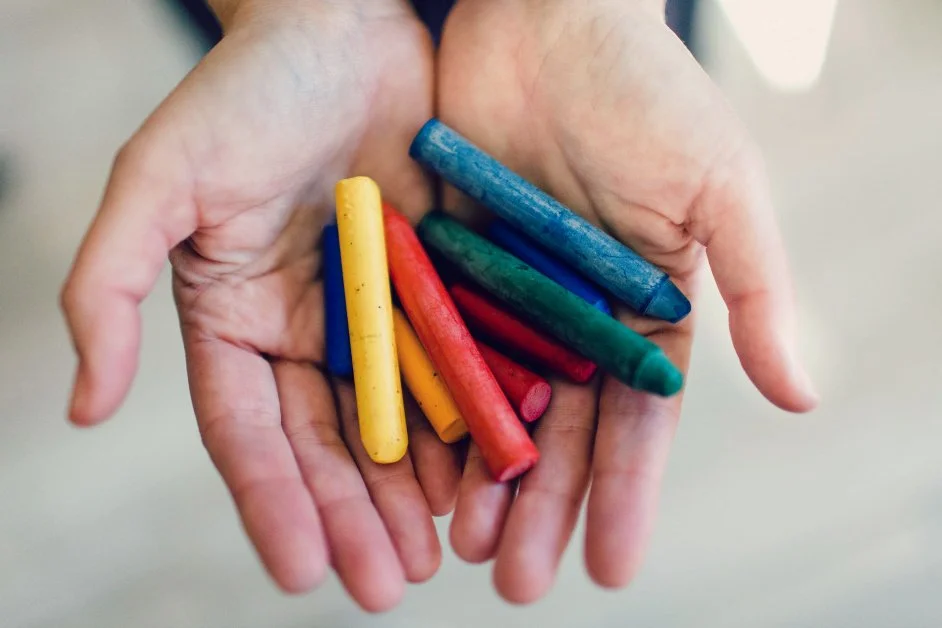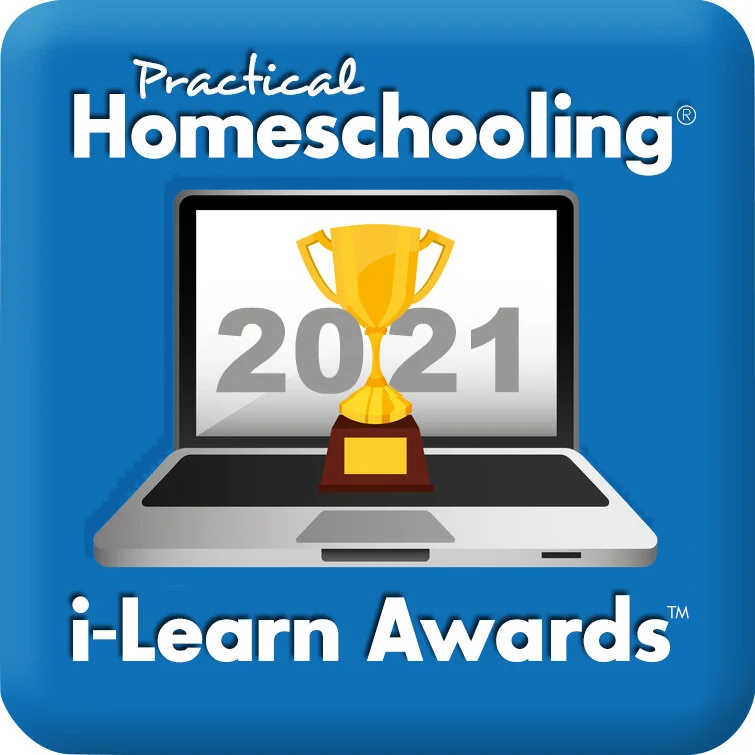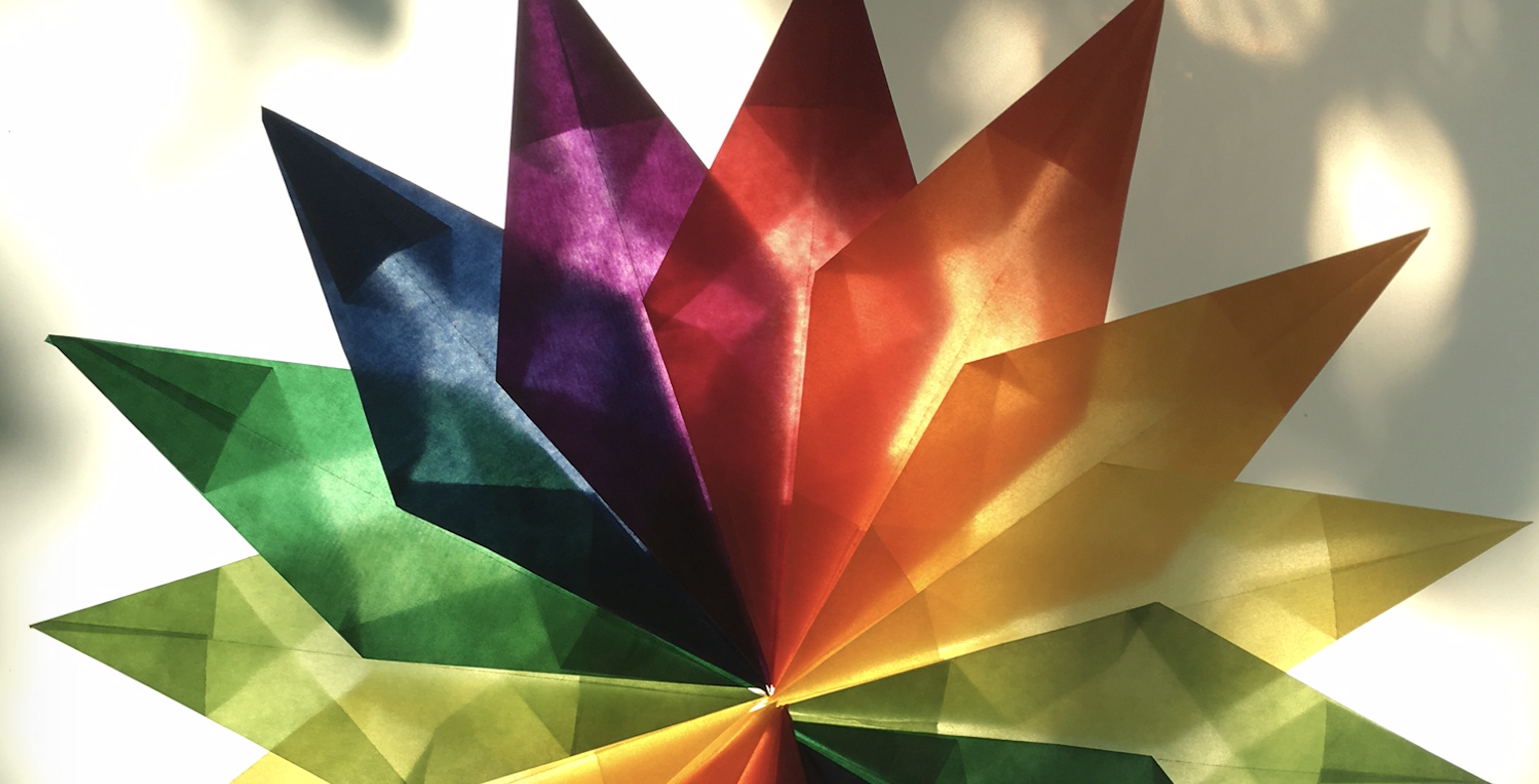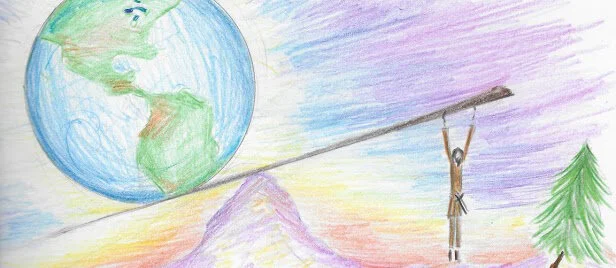
Waldorfish Blog
5 Tips for Studying the Lower Plants in Waldorf Fifth Grade Botany
Why begin with the “lower plants” in Waldorf Botany curriculum? In fifth grade Botany, we often begin with a full block that explores the “lower plants” or “simple plants”- algae, fungi, lichen, moss, and ferns.
Curious to learn more about why botany is usually split into two blocks? Click here!
Hands-on experience is the best way to connect with the lower plant world!
While we know that some of these lower plants are not all truly plants, each of these organisms have a magical, mystical sense to them in their structures, purpose, and appearance. Exploring them opens up the world of botany for the student in a gentle way; perfect for the young fifth grader who is just beginning their developmental journey towards puberty and middle school.
How can you bring hands-on experiences of the lower plants into your botany curriculum?
We’ve got five ideas to get you started!
Algae
Plan a time to be out in nature, and see if you kind find algae in a nearby river, lake, or beach. Note its color, movement, texture, and location. Not near a body of water? Head to your local library and ask for books and resources on algae, preferably one with all kinds of images!
Lichen
Head outside and try to find lichen. Look around on surfaces: fence posts, rocks, concrete, stepping stones, etc. This is a great activity even for those who live in urban areas- you’ll be surprised where lichen grows!
Fungi
Create your own sourdough starter (a yeast fungi!) and learn how to tend to it to make it active for baking. Make bread, pancakes, bagels- the sourdough possibilities are endless!
Moss
Build a terrarium using moss, plants, and other elements. This can be used as an ongoing project throughout your study of Botany, as you can continuously add to your terrarium, and watch it thrive!
Ferns
Bring ferns into the kitchen! Head to your local market and purchase some fiddleheads for a taste test. After observing them closely, find a yummy recipe and cook them up together.
Enjoy the outdoors, and see what you discover!
When it doubt- Go outside! You’ll be amazed at how the lower plants thrive in even the most unexpected places. Explore and connect with nature- it’s always worth it!
Looking for more support for the fifth grade Botany curriculum? Our course offers a full year’s worth of material, main lesson book page tutorials, art lessons, instructor support, and so much more!
About the Authors
Robyn Beaufoy is Waldorfish’s CEO, and also a course instructor for Simple Season (coming soon!), Waldorf Art for Beginners, and Weekly Art Foundations. You’ll find her intuitive touches and influences throughout everything Waldorfish offers. Robyn has been in the world of education for over 25 years, with an MA in Education and a certification in Waldorf teaching - she also homeschooled both of her children for some of that time. In 2012 Robyn co-founded Waldorfish.com, creating it with the vision of making Waldorf inspired-art and pedagogy more accessible, joyful, and doable for homeschoolers all over the world.
Caitlin Amajor is Waldorfish’s course instructor for Geometry grades 5 & 6, and Botany, as well as our Administrative Assistant. From a young age, Caitlin has been immersed in Waldorf education, attending a Waldorf school from K-8. After receiving a BA in History, Caitlin gained her certification in Waldorf teaching, and spent seven years as a Waldorf class teacher in the upper grades. With a special fondness for watercolor painting and geometry, Caitlin loves bringing Waldorf education to her students all over the world, and seeing their own individuality and style bloom from the curriculum!
The Waldorf Geology Block: Curriculum for the Transforming Child
An exciting aspect of the sixth grade Waldorf curriculum is a new area of study: Geology!
Of course, students have been studying the earth since the beginning of their academic journeys: agriculture in third grade, gardening class, and more!
This block is sometimes given the title “Mineralogy,” which we are intentionally choosing not to use here. Mineralogy is it’s own vast subject under the umbrella of Geology - one that requires an understanding of general geologic concepts. In sixth grade, the curriculum touches upon the formation of different minerals, but the goal is to really live into Geology and all the basic concepts that lead into more complex studies in the future.
Chalk is a wonderful medium to use in a geology block- it provides color, texture, and dimension!
The curriculum of the whole sixth grade year marks an important shift in the approach to learning, and it’s the perfect time to dive into geology, which means “the study of the earth.”
The sixth grader is beginning the very powerful journey of puberty; a deeply inward experience where their emotions, physical body, relationships, and worldview, all undergo a transformation. Some of these changes are quick and visible, others can be slow burning and invisible to those around them. Emotions can be hot and fiery one day - cold and aloof the next! While some days a sixth grade child may feel like the world is vast, open, and full of potential, just as quickly, it can feel small, closed, and pressure-filled. Physically, the student might feel light, airy, and free… and in the next moment they can just as easily feel heavy, awkward, and slow moving.
Charcoal is a new art medium to the sixth grade curriculum, and can be used throughout the school year- even in geology!
The growing student is experiencing polarities in a very real way- enter in the study of Geology as the perfect mirror!The geology curriculum is designed to meet students just where they are on their journey of conflicting feelings, emotions, and experiences.
Geology is full of great clashes and yet also contains seemingly insignificant subtleties. A volcano can erupt in a dramatic blast of lava and smoke, while sedimentary rock forms slowly under consistent, unseen pressure over millions of years. A mountain slowly grows taller through the process of uplift, or a new underwater trench may suddenly open from a powerful earthquake. Geology is ever moving, ever changing, and through processes that slowly unfold over time, or suddenly flare up without warning. On a deeply personal, soul level, the student connects with the earth and finds a sense of place and comfort- while they undergo great transformation, so too has the earth on which they stand!
Geology challenges the student to think big and small at the same time. They are looking at the earth in a new, far more abstract way than ever before.
Now the educator asks the student to use different thinking skills. What is the earth really made of, down to its core? What does the presence of exposed granite tell us about what may have existed here millions of years ago? What could an earthquake in the present do to the landscape of the future? Let’s think beyond just what we can see and what surrounds us- it’s time to explore the past, the present, and the future!
This is an example of a wet-on-dry painting: watercolor paints used on dry paper.
As well, the study of geology provides a deeply meaningful way to build one’s connection with the four elements and with nature. The experience of being a teenager and puberty can be one that brings forth real loneliness and feelings of separateness. A growing child may be unsure of where they belong, who they are connected to, and where they fit in socially and emotionally. In geology, the educator can foster a sense of belonging. The four elements, earth, water, air and fire, are found within every human being just as they are in geology.
The sixth grader is in a very important and often poignant point in their development, where so much is happening for them on and beneath the surface. The geology curriculum is designed to meet them right where they are. Just like the earth, the student is in a continuous and often intense point of transformation – and whether these changes are dramatic or subtle, they matter!
As with all things in Waldorf education, diving into a curriculum that truly meets the child is a deeply meaningful way to build the students’ knowledge, connection to nature, and relationships with themselves and others.
About the Authors
Robyn Beaufoy is Waldorfish’s CEO, and also a course instructor for Simple Season (coming soon!), Waldorf Art for Beginners, and Weekly Art Foundations. You’ll find her intuitive touches and influences throughout everything Waldorfish offers. Robyn has been in the world of education for over 25 years, with an MA in Education and a certification in Waldorf teaching - she also homeschooled both of her children for some of that time. In 2012 Robyn co-founded Waldorfish.com, creating it with the vision of making Waldorf inspired-art and pedagogy more accessible, joyful, and doable for homeschoolers all over the world.
Caitlin Amajor is Waldorfish’s course instructor for Geometry grades 5 & 6, and Botany, as well as our Administrative Assistant. From a young age, Caitlin has been immersed in Waldorf education, attending a Waldorf school from K-8. After receiving a BA in History, Caitlin gained her certification in Waldorf teaching, and spent seven years as a Waldorf class teacher in the upper grades. With a special fondness for watercolor painting and geometry, Caitlin loves bringing Waldorf education to her students all over the world, and seeing their own individuality and style bloom from the curriculum!
Is Waldorf Botany Academic as Well as Artistic?
Q: Is the Waldorf Botany curriculum academic?
(This post is part of a series in which we answer the most common questions we receive in our inbox re: homeschooling, Waldorf curriculum/pedagogy, and whatever else comes our way! Click here to read more from the series!)
A: A frequent misconception that we run into is that science and art cannot walk hand in hand. However, in Waldorf education, the two meld together to create a curriculum that is beautiful, deep, and academic!
Waldorf botany lessons include art, storytelling, and hands-on learning, all through the lens of scientific exploration.
Botany is usually taught in two separate blocks (to learn more about why, click here!) and each is imbued with scientific study in different ways.
A main lesson book page illustrating the inner structure of a seed- with plenty of color, of course!
The first block explores the “lower plants”- such as lichen, moss, ferns, and algae- and these plants are explored through the use of storytelling and artistic imagery. In this block, the educator is not focusing on the more complex aspects of these plants, but instead painting the picture of how these seemingly ‘simple’ plants live, thrive, and play important roles in the health of our planet.
In the first block, students explore the lower plants through imagery and imagination, while weaving in the science of the plants as well.
For example, the educator may tell the story of algae, while including that algae has no stem or real roots, cannot stand on its own, and provides much of the oxygen for all living things on earth. Through story, the child builds an understanding of algae as a living, beautiful, and essential plant.
The second Botany block, often taught later in the school year, is taught in similar ways to the first, though here, the educator brings in the method of phenomenology. (In short, phenomenology is the process of learning through doing and observation.)
The process of photosynthesis illustrated on a main lesson book page!
As the child has been growing throughout the year, by spring they are typically ready for a more complex curriculum, and ready to see plants in a new way!
Expanding upon the first block’s studies, the more complex plants are now explored: from seeds, to germination, photosynthesis to blossoms, and pollination to seed dispersal, the second block is a robust, more detailed study of the plant world.
The educator still uses art and storytelling (and will throughout eighth grade and beyond!) but they also bring in more opportunities for the student to observe, come to their own conclusions, and explore how plants grow and reproduce in a real way.
For example, learning about seeds will take a variety of forms. The educator may tell the story of the little seed waiting to sprout, and how it holds all the promise of what it will become within- even the smallest seed holds all of the potential to grow into a mighty Sequoia tree- it just needs a bit of help from air, water, and light!
The story of pollinators represented in one drawing- a perfect opportunity for students to combine science and art!
As well, the educator will bring in hands-on demonstrations, such as sprouting seeds on a windowsill, and dissecting a seed to see what’s inside.
What seeds sprout more quickly? Under what conditions? How do the sprouts differ from one type of seed to another? Can we observe the energy reserves of the seed, and what parts will sprout into the first leaf and root once it germinates?
Using this approach, the educator guides the children into seeing the plant in its entirety and its parts; how plants are not only beautiful, but how they function, and how the individual parts of a plant each have essential roles in making the plant whole.
Waldorf Botany curriculum is a wonderful example of how art, storytelling, and science can meld together to become a rich academic learning experience for the child!
Enjoy!
About the Authors
Robyn Beaufoy is Waldorfish’s CEO, and also a course instructor for Simple Season (coming soon!), Waldorf Art for Beginners, and Weekly Art Foundations. You’ll find her intuitive touches and influences throughout everything Waldorfish offers. Robyn has been in the world of education for over 25 years, with an MA in Education and a certification in Waldorf teaching - she also homeschooled both of her children for some of that time. In 2012 Robyn co-founded Waldorfish.com, creating it with the vision of making Waldorf inspired-art and pedagogy more accessible, joyful, and doable for homeschoolers all over the world.
Caitlin Amajor is Waldorfish’s course instructor for Geometry grades 5 & 6, and Botany, as well as our Administrative Assistant. From a young age, Caitlin has been immersed in Waldorf education, attending a Waldorf school from K-8. After receiving a BA in History, Caitlin gained her certification in Waldorf teaching, and spent seven years as a Waldorf class teacher in the upper grades. With a special fondness for watercolor painting and geometry, Caitlin loves bringing Waldorf education to her students all over the world, and seeing their own individuality and style bloom from the curriculum!
Waldorf Science: What is a phenomenological approach to teaching?
Q: What is a “phenomenological approach” when teaching science in Waldorf education, and what are its benefits?
(This post is part of a series in which we answer the most common questions we receive in our inbox re: homeschooling, Waldorf curriculum/pedagogy, and whatever else comes our way!)
A: Waldorf science curriculum is taught using a specific strategy called the phenomenological approach. Don’t worry, we’ll explain! It’s actually much more approachable and doable than it may first appear.
A phenomenological approach emphasizes the direct observation and exploration of the natural world through one’s senses.
In Waldorf education, the middle school science curriculum includes sensory experiences-like movement!
Students learn best when they are actively engaged in the learning process, and when they are able to connect their experiences and observations to the laws of science.
By fostering a sense of wonder and curiosity about the world around them, this approach aims to inspire students to become lifelong learners and form deep connections with the natural world.
(To learn more about teaching science in Waldorf middle school grades, click here!)
So, what does “doing” really look like when applying the phenomenological method to science curriculum?
Here are some concrete examples…
Sixth graders use wax, a heat source, and various types of metals to learn about conductivity.
Seventh graders are tasked with lifting a heavy object, such as a tree stump, and explore how a lever and fulcrum can make the job the most efficient.
Eighth graders create lip balm and lotions to study the different properties of fats and oils.
Do. Observe. Conclude.
When we apply a phenomenological approach to teaching, students connect their experiences and observations to the laws of science.
Through hands-on activities and experiments, students develop a sense of wonder and curiosity about the world, which in turn inspires life-long curiosity and deep connections with the natural world.
Plus bonus, it’s a lot of fun for students AND educators alike!
About the Authors
Robyn Beaufoy is Waldorfish’s CEO, and a course instructor in three of our courses - Simple Season, Waldorf Art for Beginners and Weekly Art Foundations. You’ll find her intuitive touches and influences throughout everything Waldorfish offers! Robyn has been in the world of education for over 25 years, with an MA in Education and a certification in Waldorf teaching - she also homeschooled both of her children. In 2012 Robyn co-founded Waldorfish.com, creating it with the vision of making Waldorf inspired-art and pedagogy more accessible, joyful, and doable to homeschoolers all over the world.
Caitlin Amajor is Waldorfish’s course instructor for Geometry grades 5 & 6, and Botany, as well as our Administrative Assistant. From a young age, Caitlin has been immersed in Waldorf education, attending a Waldorf school from K-8. After receiving a BA in History, Caitlin gained her certification in Waldorf teaching, and spent seven years as a Waldorf class teacher in the upper grades. With a special fondness for watercolor painting and geometry, Caitlin loves bringing Waldorf education to her students all over the world, and seeing their own individuality and style bloom from the curriculum!
More to explore!
Looking for something?
Welcome to Waldorfish! We started this adventure in 2012 out of a desire to make Waldorf training more accessible to class teachers in remote locations and to homeschooling families everywhere! Read more, click here.
WE WON! Our Weekly Art courses were voted “best interactive art program.” Learn more about the award, here.
A few of our most popular blog posts:


